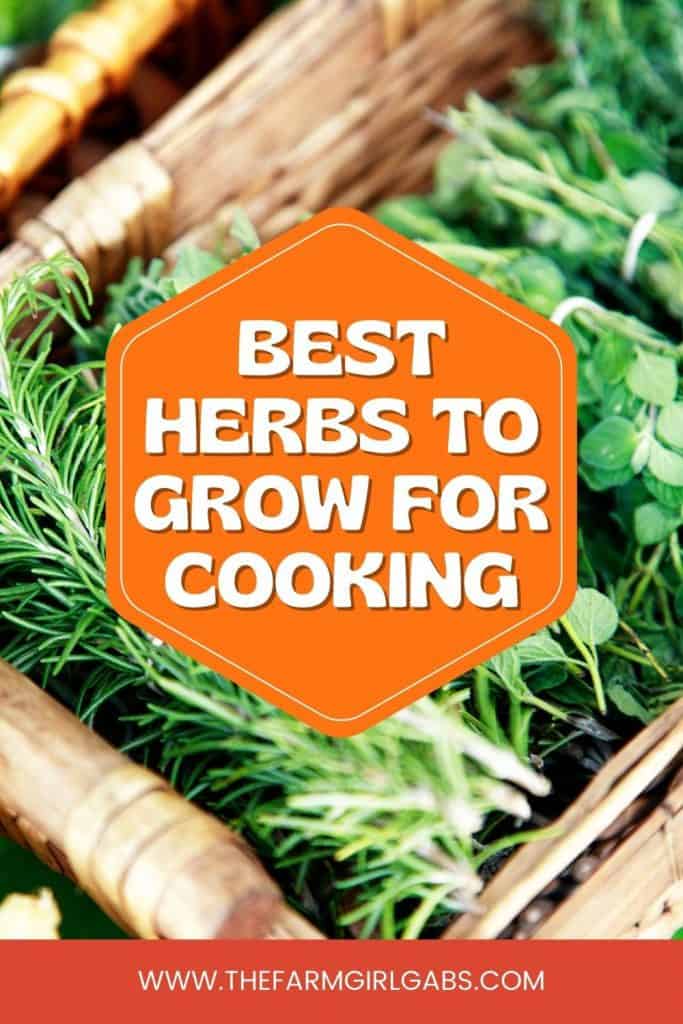Best Herbs To Grow For Cooking
Using fresh herbs in your recipes is the perfect ingredient to brighten up flavors. Growing your own herbs at home is easy. Here are the Best Herbs To Grow for Cooking.
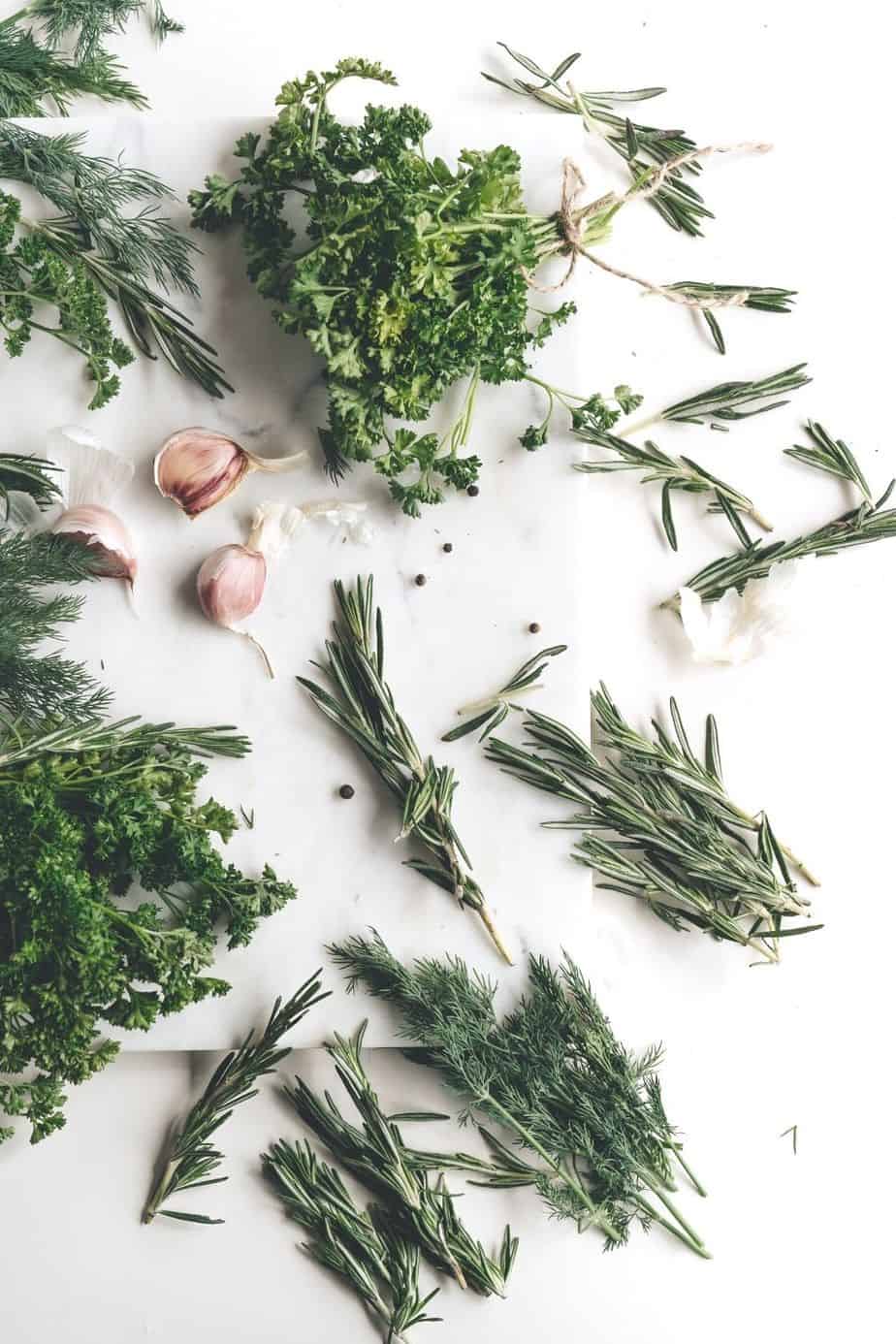
This post may contain affiliate links. We may receive a small commission if you click and purchase something. Please see our disclosure policy for more details.
Once the weather breaks and spring rolls around, my first outdoor task is to plant my herb garden. Herbs make me happy. They make a lot of recipes happy too by adding refreshing flavors to whatever you are cooking. It’s amazing how just a handful of fresh herbs can transform a dish.
Luckily, we grow a lot of herbs in our greenhouses at our farm, so I can share all my growing and cooking tips with you. If you are intimidated about growing an herb garden, don’t be! Fragrant herbs add flavor to any meal and they are really easy to grow….I promise! If you don’t have an area to plant them in your yard, or don’t have a yard, they can easily be grown in containers and placed in a sunny spot outside your home or in.
FREEBIE ALERT! Be sure to download the FREE Cooking With Herbs Guide Below.
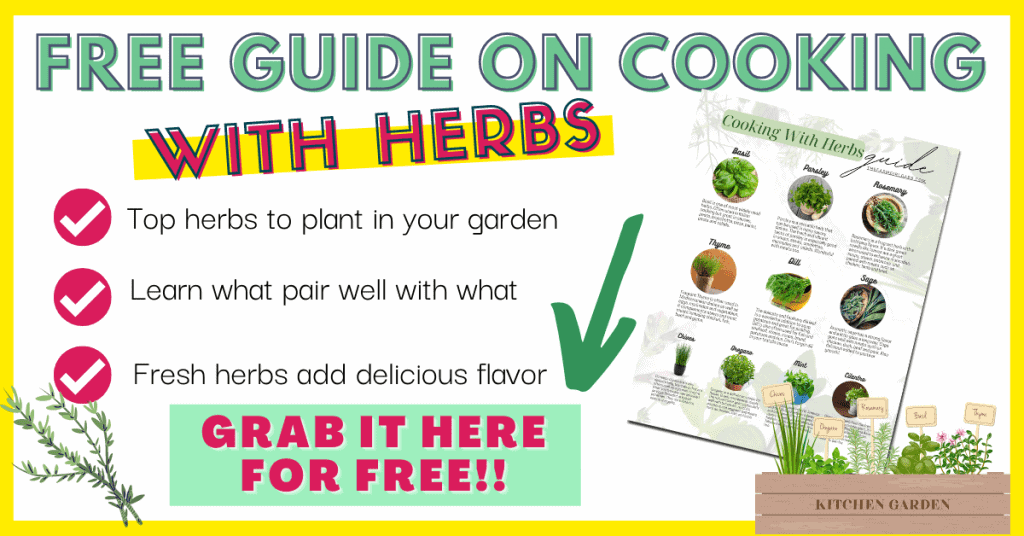
Tips For Growing Culinary Herbs In Your Kitchen Garden
- Find the best real estate: Herbs like sun. Find an area in your yard (or a deck if you are planting herbs in containers) that has at least six hours of sunlight a day. Full sun to partial shade is the best growing environment for them.
- Out of sight, out of mind: Make sure you can see your herb garden so you remember to care for your herb garden.
- Keep it manageable: Don’t plant more than you can handle. If you are a beginner gardener, then start small by planting just a few of your favorite herbs
- Plant near a water source: It’s always a good idea to plant any type of garden near water so you can easily hook up the hose to give your plants a drink. Lugging heavy water cans is not fun.
- Check your soil: Before planting herbs, make sure the soil is well-drained and nutrient-rich.
- Know Your Zone: Plant your herbs when the threat of frost is not an issue.
- Container it!: Consider container gardening. If you don’t have an outdoor space to plant a garden, planting herbs in pots is a great option. Container gardening is a great option if you lack space or are worried your green thumb may not be all that green yet.
- Feed your plants: Plants need nourishment. Feed them regularly for the best results. I find that the best fertilizer for herbs is Miracle-Gro All-Purpose Plant Food.
- Buy transplants from your local garden center: Shop local and support local agriculture. Hit up your local garden center or farmers’ market for started herb plants that you can plant at home.
- Annual Herbs vs Perennial Herbs: What’s the difference?: An annual is a one-and-done plant, meaning it won’t come back each year. A perennial is a plant will come back year after year. I talk about which herbs are annuals and which are perennials in detail below.
10 Best Popular Herbs To Grow For Cooking
Basil (Ocimum basilicum)
Fresh Basil is probably one of the most popular herbs to grow. It is one I always recommend starting with. Basil is an annual (meaning it will not come back year after year) and comes in many different varieties. Sweet Basil, however, is the queen. Basil is very popular in Italian, Greek and Thai Cooking. Basil is a member of the mint family.
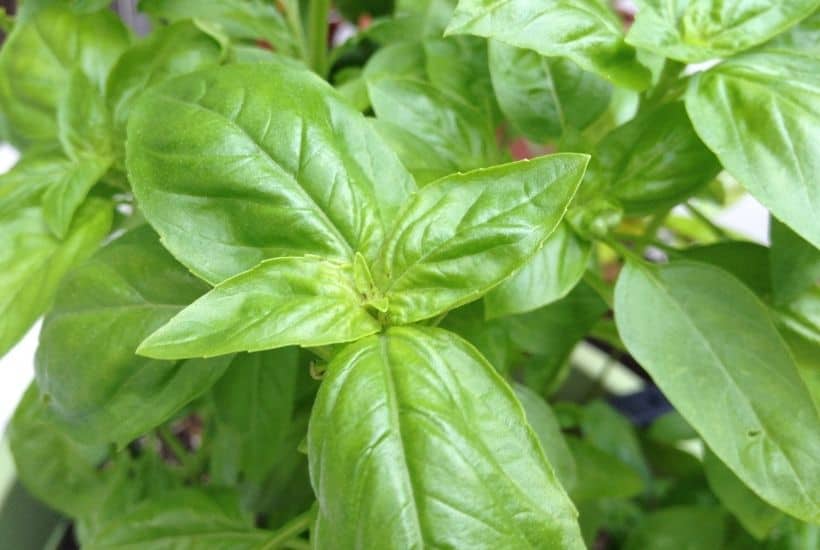
How To Use Basil
- Make a Classic Pesto
- Italian Potato Salad
- Add it to fresh spaghetti sauce
- Top a pizza with it
- Make some Thai basil fried rice
- Try this strawberry basil moscow mule
- Make some bruschetta
Parsley (Petroselinum crispum)
I think I have to give parsley the award for being the most popular herb because of its versatility. Parsley is considered a biennial which means it will come back for at least one additional season in warm climates.
Although there are several different varieties, flat leaf (Italian Parsley) and curly parsley are the most popular. Parsley pretty much goes well with almost any savory dish. The fresh and vibrant taste of parsley is especially good in soups, stews, omelettes, marinades and salads. It’s wonderful with meats, poultry and fish too.
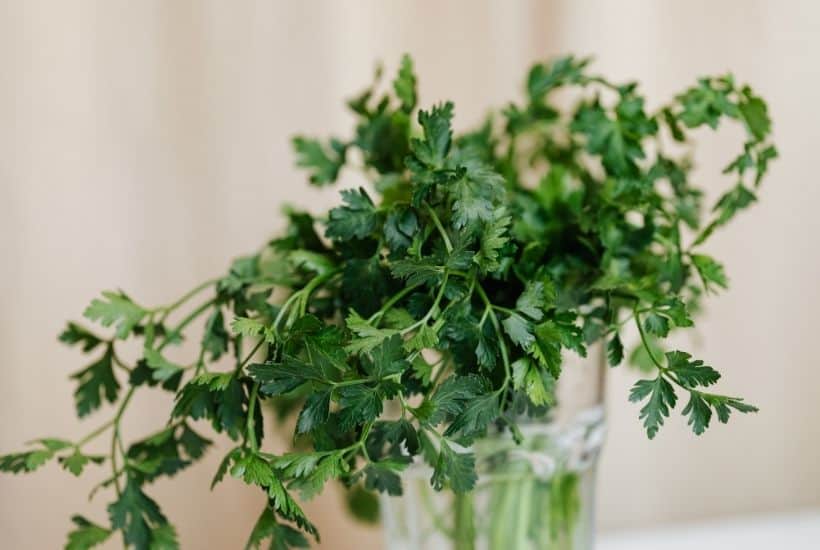
How To Use Parsley
- Make a simple parley potatoes
- Expand your culinary tastebuds and make Tabbouleah
- Add some to meatballs
- Make a Chimichuri sauce
- Make a classic macaroni salad
Rosemary (Rosmarinus officinalis)
Rosemary is an aromatic evergreen-like perennial that can grow into a shrub. This perennial looks like an evergreen branch but you only eat the small leaves and not the stem,
Rosemary goes great with meat dishes, fish, potatoes and is delicious in breads. This earthy herb is the perfect way to perk up your recipies.

How to Use Rosemary
- Make Rosemary Parmesan Sweet Potatoes
- Add it to olive oil to make an infused oil
- Make homemade foccacia
- Add it to a balsamic glaze and top it on pork
Thyme (Thymus vulgaris)
Thyme is one of my favorite fresh herbs. Thyme grows in small clusters of small stems. The leaves are pulled off when cooking with thyme. It is commonly used in a number of cuisines such as European, British, Mediterranean, African, Latin and Central American.
Thyme is part of the famous herb quartet called Bouquet Garni (parsley, sage, rosemary and thyme). In most cases, thyme is a delicious herb used in savory dishes. It is also great in dressings and marinades.
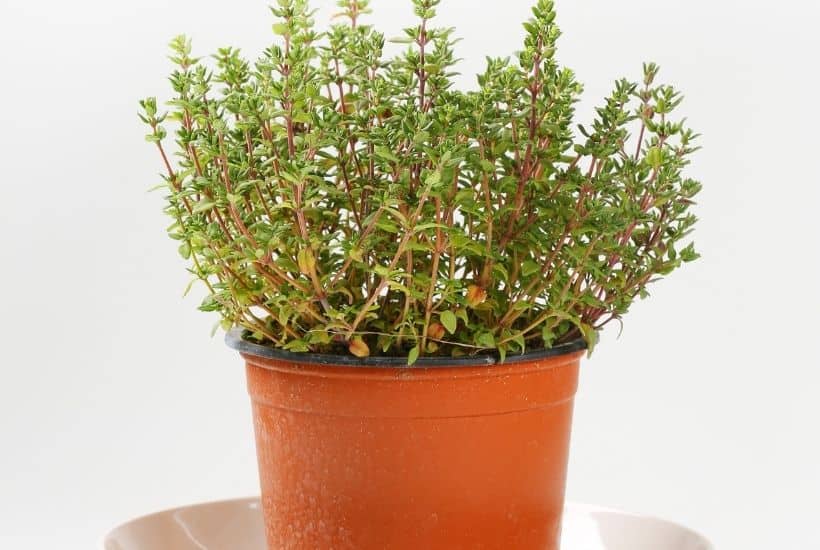
How To Use Thyme
- Add it to roasted vegetables
- Add it to a lemon marinade for salmon
- Add it to chicken soup
- Add it to rice pilaf
- Add it to salad dressing
Dill (Anethum Graveolens)
What the dilli-o? The delicate and feathery dill leaf is a wonderful herb that pairs will with so many dishes. Dill prefers a well-drained soil and grows best in the early spring and summer.
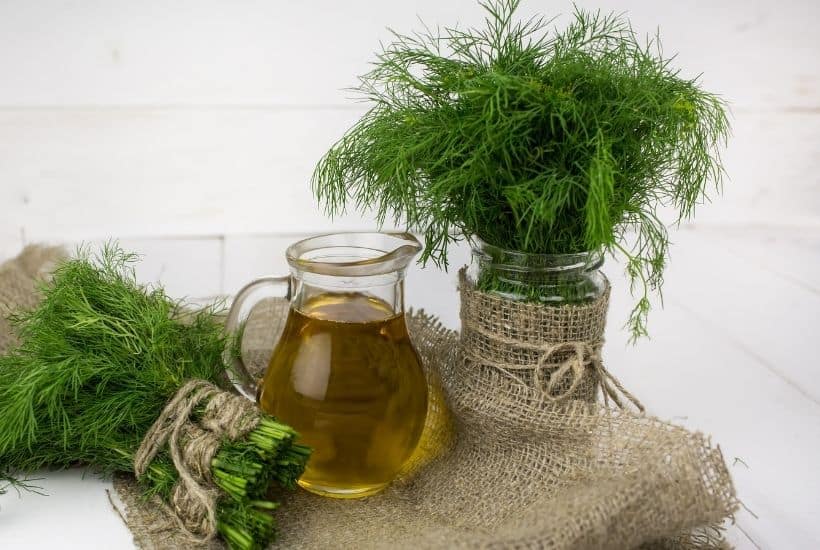
How To Use Dill
- Make refigerator pickles
- Whip up some tzatziki sauce
- Use it for fish and seafood
- Add it to potatoes
Sage (Salvia Officinalis)
Sage is another perennial herb that is very easy to grow. It is sometimes referred to as Common Sage. It is very fragrant plant with gray leaves and an earthy flavor. As sage matures, it will grow into a small shrub. It is a staple in Mediterranean cooking. It was once used as a medicinal herb in ancient times. Today, it is a staple ingredient in holiday stuffing. But, sage has some many other delicious culinary uses.
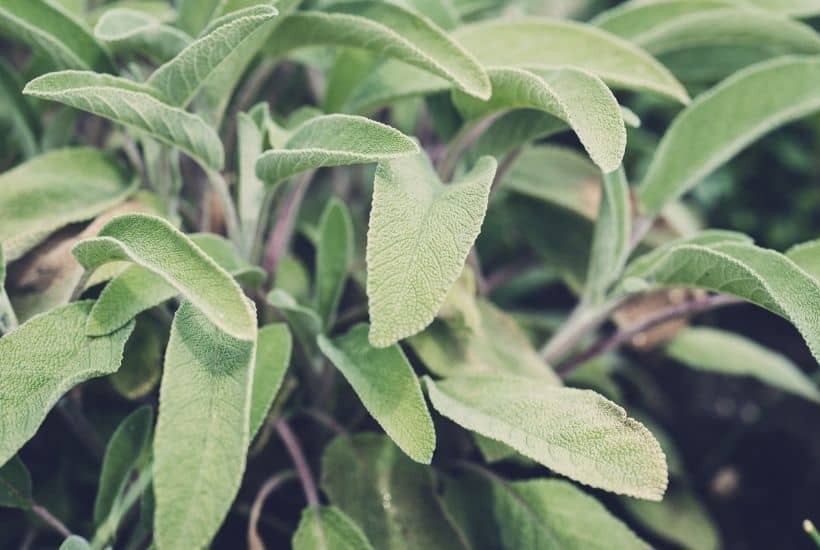
How To Use Sage
- Fry sage in brown butter to top ravioli
- Add it to Thanksgiving stuffing
- Add fresh sage leaves to a cocktail
- Make a compound butter
- Add it to a marinade
Chives (Allium schoenoprasum)
Chives look like grass but taste so much better. It is a member of the onion family and its delicate flavor pairs well with so many different recipes. Chive is a perennial too so you will see its tender sprigs year after year.

How To Use Chives
- Top a baked potato
- Add them to scrambled eggs
- Sprinkle some over corn on the cob
- Add them to mashed potatoes
- Use it as a topping for chili
- Add to herb butters
Oregano (Oregano vulgare)
Oregano is a well known staple for Italian, Greek, and Mexican meals. It is very easy to grow in a garden or pots. It is a perennial so it will come back year after year. Oregano is more than an ingredient in tomato sauce or a topping for pizza. The robust flavor goes particularly well with tomatoes, zucchini, potatoes and eggplant and meats such as chicken, fish, and lamb. Drying oregano increases it’s flavor.
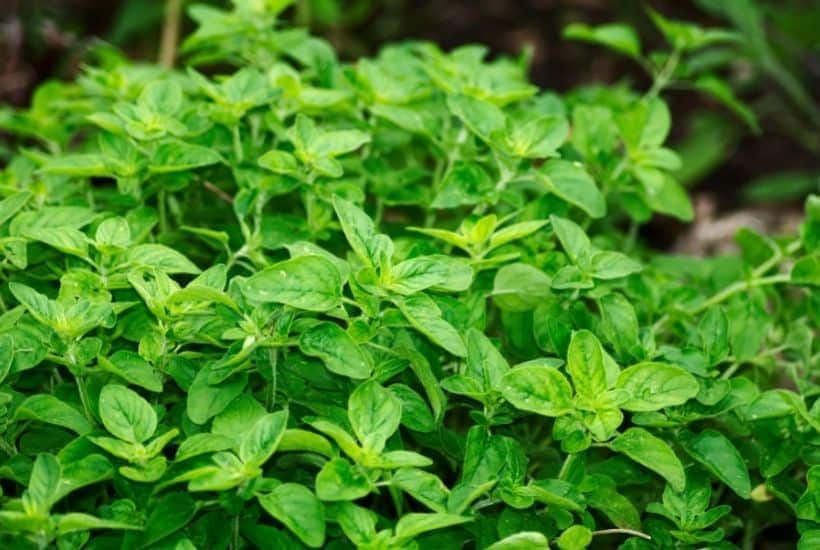
How To Use Oregano
- Use it in marinades and salad dressings
- Add it to stuffing
- Make Italian stuffed peppers
- Make a oregano pesto
- Make a savory bread
Mint ( Mentha)
Mint is very popular in North America and the Middle East. This perennial will come back bigger and bigger each year. It is another easy herb to grow but can be very invasive. It can be grown in a container to help curb its growing pattern. I also recommend planting it in a seperate area away from your other herbs so it doesn’t get too aggressive and take over.
Mint has a sweet and cool flavor. It is often used in savory dishes such as tabbouleh, falafels, salmon and shrimp. It is fabulous in desserts and drinks too.
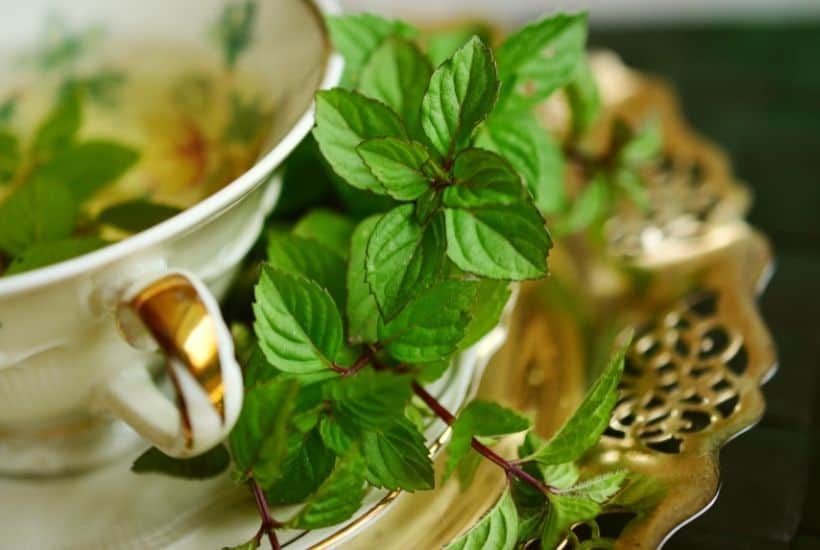
How To Use Fresh Mint
- Make strawberry mint tea
- Add it to watermelon salad
- Make a simple syrup and use in drinks or as a topping
- Add it to chicken gyros
Cilantro (Coriandrum sativum)
Cilantro is an annual that is often called Mexican Parsley because it closely resembles flat leaf parsley. Cilantro is an herb from the fresh leaves of the coriander plant. It is very popular in Mexican and Asian dishes. It is excellent in salsas, salads and marinades.
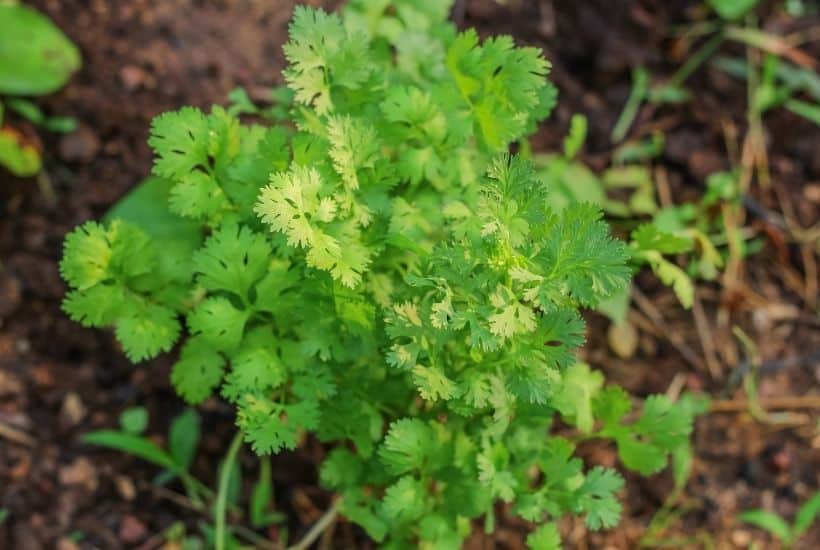
How To Use Cilantro
- Add it to Pineapple Pico de Gallo
- Use it as a topping for grilled pork tacos
- Make Thai Peanut Salad
- Spice up your pasta salad
- Make chutney
How To Freeze Fresh Herbs
Freezing fresh herbs is a great way to preserve their flavor and use them year-round, especially during the winter months. So before the last frost, be sure to grab some to preserve their great flavor. To freeze, grab a few ice cube trays and fill each slot with olive oil. Add chopped herbs to each slot.
You can add individual herbs or make an herb mix, totally up to you. Freeze for 8 hours. After the herbs are frozen, remove the frozen herb cubes the tray and place in a food storage bag. Store in the freezer until ready to use.
When you want to add some fresh herb flavor to a recipe, simply add a frozen cube or two to the recipe.

How To Make Dried Herbs
Traditional Air Drying
Drying fresh herbs is another easy way to preserve their flavor. The traditional way is to cut herbs, leaving a stem on each. Wash and dry thoroughly. Make an herb bundle with some kitchen twine. Hang bundles in a dark, dry spot (think attic, basement or garage) where there is no sunlight.
Oven Drying
Another easy method is to is to line a baking sheet with a silicone mat. Line individual leaves on the mat and place in your oven. “Bake” at your oven’s lowest setting for 30 minutes. When the leaves crumble easily, they are done.
Microwave Method
Believe it or not, you can dry herbs in the microwave. Thoroughly wash, dry and seperate leaves. Microwave between two sheets of paper towel in 30-minute increments.
Can I Grow A Kitchen Herb Garden Indoors?
Limited on garden space, you can grow your herbs on a sunny windowsill in your home. This mason jar herb garden as an easy indoor gardening idea.
Where to Buy Fresh Herbs?
If you are not up for growing a culinary herb garden, that’s ok. You can find fresh herbs at your local farmers’ market or grocery store.
Ready to start planting your spring garden? Dig in with these gardening tools.
Save this ultimate guide to cooking with herbs. Pin the image to your favorite Pinterest board.
